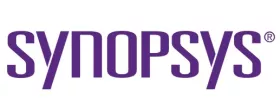Flash Forward: MRAM and RRAM Bring Embedded Memory and Applications into the Future
Embedded flash and its off-chip counterpart, NOR flash, have been the gold standards for non-volatile memory — the kind used for persistent or long-term data storage — for many years. But these memory stalwarts are struggling to support process technologies that have shrunk below 28nm. And they were never designed for AI, IoT, and other applications that demand lightning-fast data collection, transmission, storage, and analysis at scale.
To address the need for better non-volatile memory, two emerging technologies have come to the forefront: Magneto-Resistive Random Access Memory (MRAM) and Resistive Random Access Memory (RRAM). Not only do these embedded memories provide the density, capacity, and scalability for modern processing requirements, they’re also optimized for different applications, use cases, and needs.
To read the full article, click here
Related Semiconductor IP
Related Blogs
- Manufacturing RRAM: Challenges & Opportunities
- Why Embedded MRAMs Are the Future for Advanced-Node SoCs
Latest Blogs
- Enabling End-to-End EDA Flow on Arm-Based Compute for Infrastructure Flexibility
- Real PPA improvements from analog IC migration
- Design specification: The cornerstone of an ASIC collaboration
- The importance of ADCs in low-power electrocardiography ASICs
- VESA Adaptive-Sync V2 Operation in DisplayPort VIP
